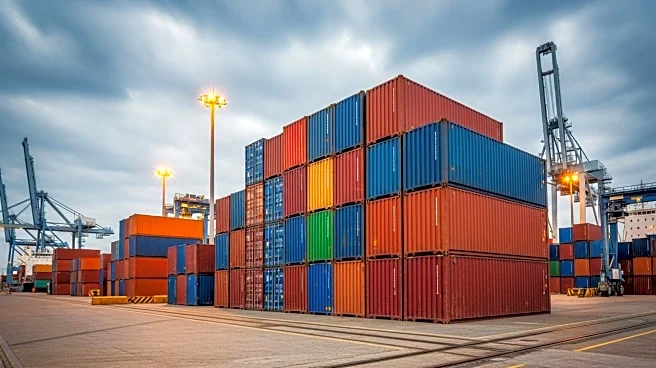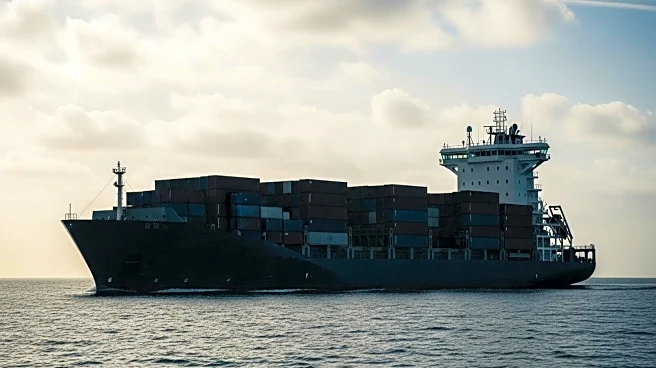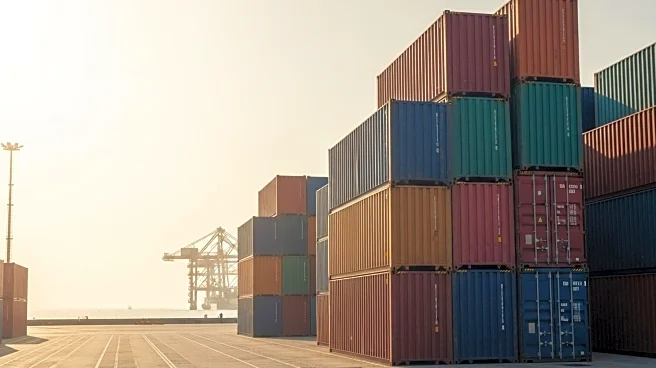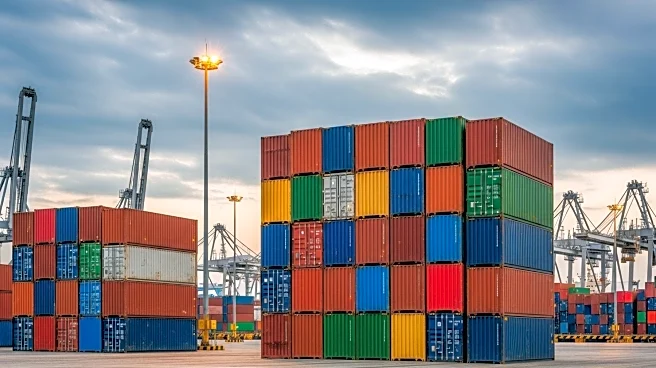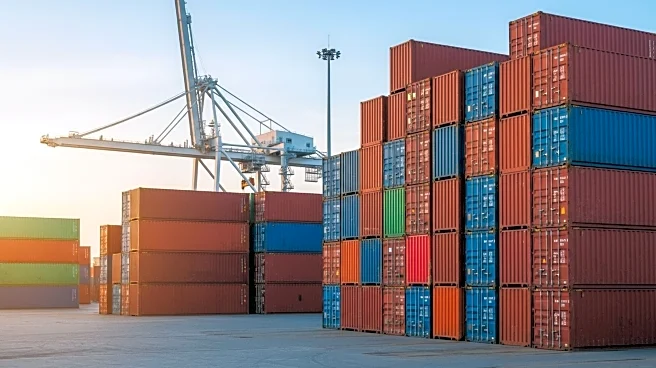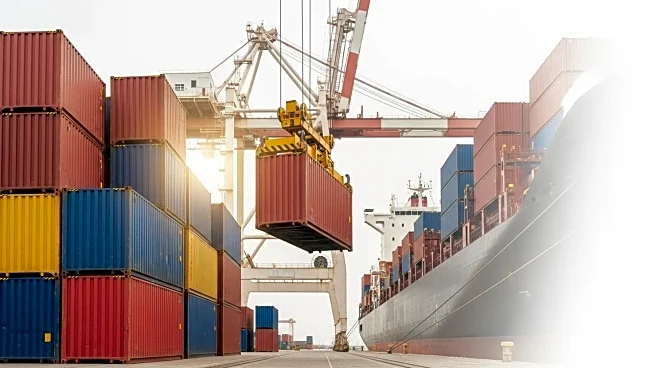What's Happening?
ICIS has reported that shipping container rates from Asia to the United States are experiencing downward pressure due to a decline in import volumes at major U.S. ports. This trend is attributed to rising tariffs and the uncertainty surrounding U.S. trade policy. The Global Port Tracker, a collaboration between the National Retail Federation (NRF) and Hackett Associates, indicates that U.S. retailers have maximized their imports ahead of anticipated tariff increases. Jonathan Gold, NRF Vice President for Supply Chain and Customs Policy, highlighted the challenges in making long-term business plans due to trade policy uncertainties. Ben Hackett, founder of Hackett Associates, noted that tariffs have significantly impacted trade, leading to a pessimistic outlook for the remainder of the year. The report forecasts a decline in container volumes for the upcoming months, with significant year-on-year decreases expected from September through December.
Why It's Important?
The decline in container rates and import volumes has significant implications for U.S. industries, particularly those reliant on imports from Asia. Retailers, who have preemptively stocked up on goods, may face challenges in inventory management and pricing strategies. The ongoing trade tensions and tariff increases could lead to higher costs for consumers and businesses, potentially affecting economic growth. The chemical industry, which relies on container ships for transporting polymers and other materials, may also experience disruptions. The broader impact on the supply chain could lead to increased costs and logistical challenges, affecting various sectors of the U.S. economy.
What's Next?
As the situation develops, stakeholders such as retailers, importers, and policymakers will need to monitor trade policy changes closely. Potential adjustments in tariffs or trade agreements could alter the current trajectory of container rates and import volumes. Businesses may need to explore alternative supply chain strategies to mitigate the impact of tariffs and ensure continuity in operations. Additionally, any changes in U.S.-China trade relations could have a significant impact on future shipping rates and volumes.
